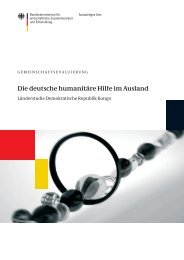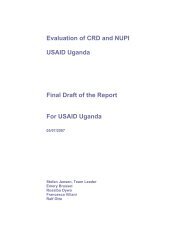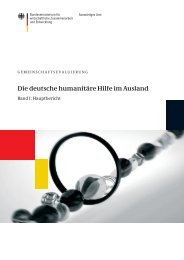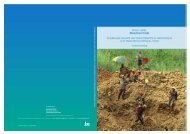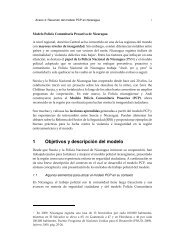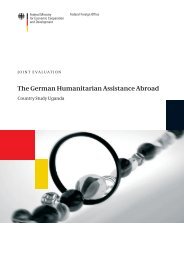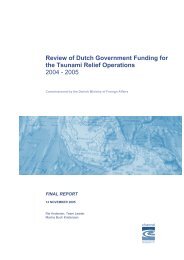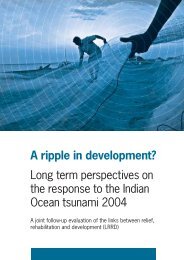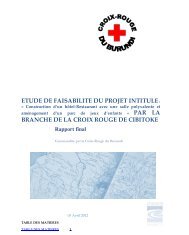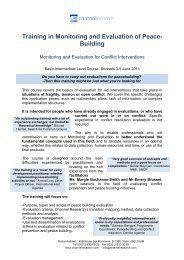Amani Labda - Peace Maybe Joint Evaluation of Conflict - Channel ...
Amani Labda - Peace Maybe Joint Evaluation of Conflict - Channel ...
Amani Labda - Peace Maybe Joint Evaluation of Conflict - Channel ...
You also want an ePaper? Increase the reach of your titles
YUMPU automatically turns print PDFs into web optimized ePapers that Google loves.
JOINT EVALUATION OF CONFLICT PREVENTION AND PEACE BUILDING IN DRCVOLUME 1Demobilisation and Reintegration (DDR) and Security Sector Reform (SSR)program.The national Disarmament, Demobilisation and Reintegration (DDR) plan,launched in 2003, gave combatants the choice <strong>of</strong> either returning to civilian life orjoining the army. Those that opted to join the newly formed Armed Forces <strong>of</strong> theDemocratic Republic <strong>of</strong> Congo (FARDC in the French acronym) underwent“brassage”, a process bringing together different groups in the Congolese armedforces and combining command structures.In addition, The DRC is a member <strong>of</strong> several sub-regional cooperation structures,notably the Economic Community <strong>of</strong> Central African States (ECCAS), theEconomic Community <strong>of</strong> the Great Lakes Countries (Communauté économiquedes pays des Grands Lacs, or CEPGL) and the Southern African DevelopmentCommunity (SADC). However, these entities have not proved adequate orequipped to address regional security problems as they relate to the DRC.The <strong>Amani</strong> peace process, launched at the beginning <strong>of</strong> 2008 in Goma, aimed todefine the necessary requirements for an inclusive peace, including notably thedemobilisation <strong>of</strong> Kivu militias. However, absence <strong>of</strong> progress in the DDRprocess and further difficulties in integrating former rebel commanders into theCongolese army (FARDC) command chain, resulted in renewed mobilisation <strong>of</strong>militias, and at the end <strong>of</strong> 2010, the revival <strong>of</strong> militias that had been ‘dormant’.This phenomenon was reinforced by the terms <strong>of</strong> the agreements that pushe torecognise any person who could mobilise an armed force as a potentialnegotiator.New military solutions, supported by the UN, were sought. At the beginning <strong>of</strong>2009, the negotiations between Rwanda and the DRC from the end <strong>of</strong> 2008culminated in a joint military <strong>of</strong>fensive launched against the FDLR, the RwandanHutu rebel group established in eastern Congo following the genocide. Theoperation, called Umoja Wetu (literally “our unity”), was launched at the end <strong>of</strong>January 2009, but limited to North Kivu. By the end <strong>of</strong> March, a subsequentoperation, Kimia II, composed <strong>of</strong> FARDC and combatants from former militia,assumed responsibility until the end <strong>of</strong> 2009, without clear outcomes; it has nowbeen replaced by the operation <strong>Amani</strong> Leo launched in early 2010 with a minimallevel <strong>of</strong> support from MONUC.All these efforts have not prevented frequent clashes between armed groups,<strong>of</strong>ten a result <strong>of</strong> the absence <strong>of</strong> progress in security sector reform or fromcompeting interests. These disconnections were also support by cultural, physicaland information divides, which fracture even more here than in other parts <strong>of</strong> theworld the terrain <strong>of</strong> fluid armed movements.Since the signing <strong>of</strong> the peace accord, the conditions around conflict in easternDRC have not considerably improved, with episodes <strong>of</strong> recurring violence. Large



